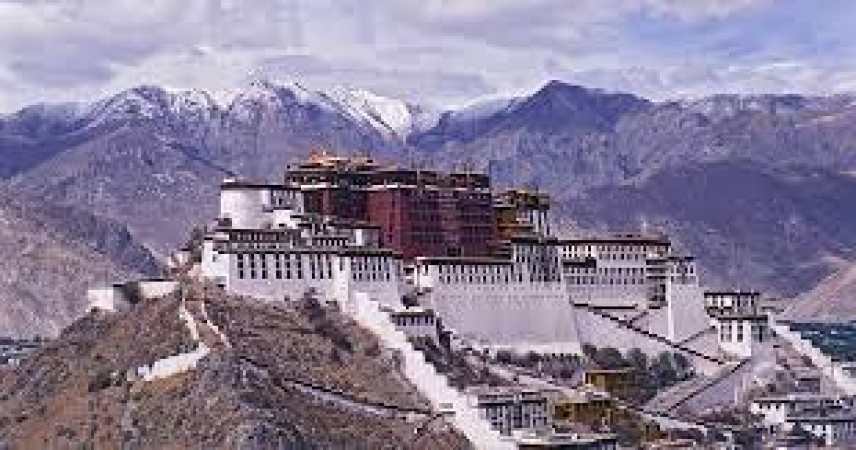
The Potala Palace is an iconic and historically significant architectural wonder that has captured the imagination of people worldwide. Perched atop Marpo Ri Hill in Lhasa, Tibet Autonomous Region, China, this majestic structure stands as a testament to Tibet's rich cultural heritage and religious history. In this article, we will delve into the Potala Palace's intriguing past, explore its architectural marvels, and uncover the spiritual significance it holds for millions of Buddhists.
The Rich History of the Potala Palace
The Potala Palace's history dates back to the 7th century when it was first constructed during the reign of King Songtsen Gampo. Initially designed as a humble palace, it underwent several expansions under subsequent rulers, with the most notable expansion attributed to the fifth Dalai Lama in the 17th century. The palace became the winter residence of the Dalai Lama and the center of Tibetan governance and religious activities.
The Architectural Marvel of the Potala Palace
Construction and Layout
The Potala Palace's architectural design is a splendid fusion of Tibetan, Nepalese, and Chinese influences. Its distinctive white and red color scheme symbolizes compassion and wisdom, respectively. The palace consists of two main parts: the Red Palace, which is primarily devoted to religious affairs, and the White Palace, serving as the residence of the Dalai Lama.
UNESCO World Heritage Site
In recognition of its cultural significance and exceptional architecture, the Potala Palace was inscribed as a UNESCO World Heritage Site in 1994. This prestigious designation has further heightened its global prominence as a treasure of human civilization.
The Spiritual Significance of the Potala Palace
Home of the Dalai Lamas
For centuries, the Potala Palace served as the primary residence of the Dalai Lamas, the spiritual leaders of Tibetan Buddhism. The palace housed numerous religious relics, sacred texts, and invaluable artifacts, making it a revered site for Buddhist pilgrims.
Buddhist Pilgrimage Site
Devotees from around the world make arduous journeys to the Potala Palace as part of their spiritual pilgrimage. The palace's serene ambiance, coupled with the breathtaking views of the Himalayas, offers a spiritually enriching experience for those seeking enlightenment.
Geographical Location of the Potala Palace
Lhasa, Tibet Autonomous Region, China
The Potala Palace is situated in the heart of Lhasa, the capital city of the Tibet Autonomous Region in China. Lhasa, often referred to as the "City of Sunshine," is surrounded by picturesque landscapes and is the political, cultural, and economic center of Tibet.
Elevation and Terrain
Standing at an impressive elevation of 3,700 meters (12,100 feet) above sea level, the Potala Palace overlooks the entire Lhasa Valley. Its strategic location atop a hill provides both a majestic panorama and a defensible position.
How to Get to the Potala Palace
Transportation Options
Travelers can access the Potala Palace via flights to Lhasa Gonggar Airport from major cities in China. From the airport, taxis and buses are available to reach the palace. Additionally, trains from Beijing, Shanghai, Chengdu, and other cities connect to Lhasa, offering a scenic journey across the Tibetan plateau.
Travel Tips and Precautions
Due to the high altitude, visitors must acclimatize properly to avoid altitude sickness. It is advisable to drink plenty of water, avoid strenuous activities upon arrival, and consult a healthcare professional if necessary. Respect for local customs and traditions is of utmost importance when visiting this sacred site.
Best Time to Visit the Potala Palace
Climate and Weather
The ideal time to visit the Potala Palace is during the spring (April to May) and autumn (September to October) seasons when the weather is pleasant and stable. Summers can be crowded, and winters can be harsh with freezing temperatures.
Festivals and Events
Visiting during the Tibetan New Year (Losar) or the Saga Dawa Festival adds a unique cultural experience to the trip. These festivals are celebrated with vibrant rituals, colorful performances, and spiritual ceremonies.
Cultural and Artistic Treasures Inside the Potala Palace
Intricate Murals and Thangkas
The interior of the Potala Palace is adorned with awe-inspiring murals and intricate thangkas (Buddhist paintings on silk). These artistic masterpieces depict Buddhist deities, historical events, and the journey of the soul towards enlightenment.
Precious Statues and Relics
The palace houses an extensive collection of statues made from various precious materials such as gold, silver, copper, and gemstones. Additionally, sacred relics of revered Buddhist masters are enshrined within the palace's halls.
Preserving the Potala Palace for Future Generations
Conservation Efforts
The Potala Palace faces challenges from natural elements, tourism, and urbanization. To safeguard this architectural gem for future generations, the Chinese government and international organizations actively support restoration and conservation projects.
Balancing Tourism and Heritage Protection
Efforts are made to strike a balance between promoting tourism and preserving the palace's sanctity. Visitor numbers are regulated, and protective measures are implemented to prevent damage to the fragile historical structure. The Potala Palace is not just an exquisite architectural wonder but a symbol of Tibet's rich cultural heritage and spiritual legacy. As a magnet for travelers, pilgrims, and history enthusiasts alike, this sacred palace continues to awe and inspire all who visit. So, if you seek a glimpse into the profound world of Tibetan Buddhism and wish to immerse yourself in breathtaking beauty, the Potala Palace should undoubtedly be at the top of your travel list.
Cryptocurrencies and Transactions on the Dark Web
Decentralized Finance (DeFi) and Cryptocurrencies: A Revolution in the Financial Landscape